Why Eat Ugly Produce?
The UN Food and Agriculture Organization states “roughly 1/3rd of the edible parts of food produced for human consumption, gets lost or wasted globally, which is about 1.3 billion ton per year.” With fruit, vegetables, and roots making up 40-50% of that, this brings up an odd food consumption topic: the rejection...
THE GOOD BEHIND WHAT YOU EAT
Tatianna
2/20/20216 min read
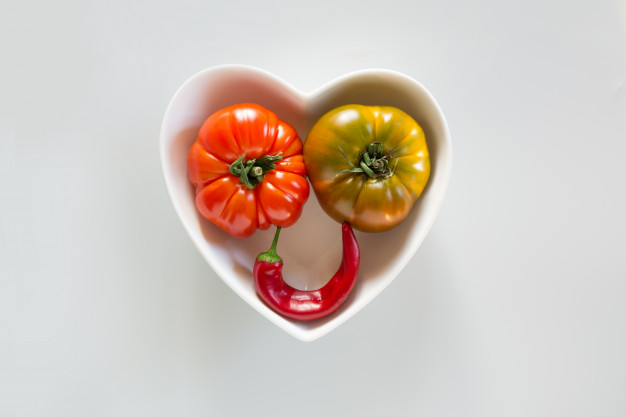

Why Eat Ugly Produce?
The UN Food and Agriculture Organization states “roughly 1/3rd of the edible parts of food produced for human consumption, gets lost or wasted globally, which is about 1.3 billion ton per year.” With fruit, vegetables, and roots making up 40-50% of that, this brings up an odd food consumption topic: the rejection of ugly produce. Not old, no mold, still perfectly scrumptious, only ugly.
According to Hungry Harvest, "Every year, 40% of food goes to waste in this country. 20 billion pounds of that is produce that's lost before it ever leaves the farm. The injustice of wasting this much edible food when 20% in the US lack access to a nutritious diet is plenty of reason to rescue this produce & help mend a broken food system. But the impact of wasted food extends well beyond our bellies. Almost 25% of agricultural water is used to grow food that’s not eaten. We generate the equivalent greenhouse gas emissions of 1 in 7 cars by growing, shipping & processing uneaten food. Cutting food waste in half globally could reduce our ecological footprint by 16% & ensure a more sustainable future."
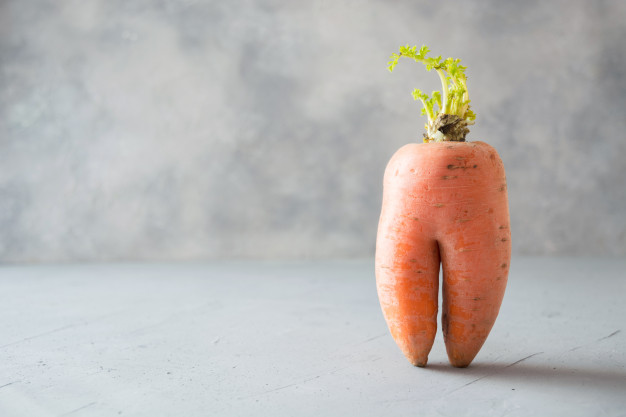

The beauty standards of produce can be so steep that grocers may just throw away the fruit and vegetables that are not beautiful. This results in food being narrowly categorized as either edible (attractive) or inedible (ugly), which drastically impacts farmers who rely on those retailers for their main source of income as well as leaving behind an unfair, unnecessary trail of wastage. Wastage that needlessly adds to the spending on water, land, energy, and labor, in addition to contributing to global warming and climate change.
Imperfect Produce writes, "When we waste food, we end up wasting all of the resources that went into growing it. Growing food that goes to waste currently uses 21% of our freshwater, 19% of our fertilizer, and 18% of our cropland. When food ends up in the landfill, it produces methane, a greenhouse gas 23 times as potent as CO2. Reducing food waste is one of the top 3 ways to reverse global warming, according to research by Project Drawdown. When a farmer has to leave produce unpicked in their field, it amounts to a financial loss. Globally, 800 to 900 million tons of food each year, the weight of 9,000 aircraft carriers, rots in storage or doesn't make it out of the fields because farmers can’t find a market for them. As a country, we spend $218 billion – 1.3% of our GDP – growing, processing, transporting, and disposing of food that is never eaten. 40 million Americans go hungry every year. Recovering just 30% of the food that our country wastes each year would be enough to feed this population of Americans"


We were taught not to buy food that isn’t up to a specific appearance standard. As buyers who are mostly exposed to just the pretty, this practice can distance our relationship to growers. However, behind every ugly fruit and vegetable is a local grower facing less than perfect weather, temperature, and soil conditions. What we can do is acknowledge the human and natural elements of where the produce has come from. Thankfully, there is a worldwide movement to find a place for ugly produce. Without us always knowing, ugly produce can be the ingredients of beautiful, delicious dishes served in restaurants or crushed and blended into healthy juices and smoothies, or in our case cooked on a loving stove top to become jam.
In 2014, Intermarche, Farce’s 3rd largest supermarket, started selling fruits and vegetables that are fine to consume, but may be misshapen or bruised. The program reached 13 million people after 1 month. And as of February 2016, French supermarkets are required by law to either donate or compost food that’s nearing its expiration date. This helps environmental-conscious and budgeting shoppers, local growers, and the environment.
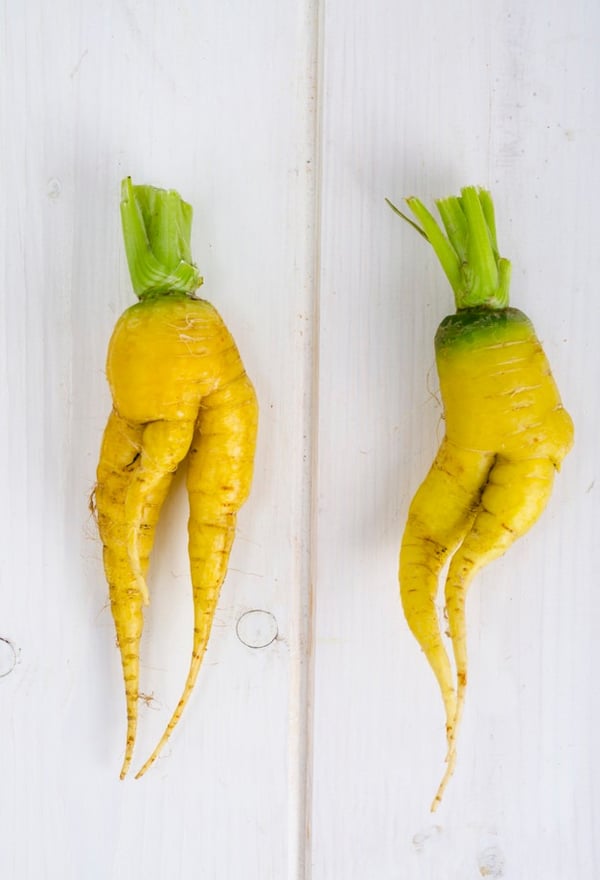

My stance is similar to that of Misfits Market. "All-natural produce is apt to look funkier than the picture-perfect kind that is engineered in a lab. Unfortunately, misfit fruits and vegetables are often rejected by grocery stores and supermarkets due to natural imperfections or variations in size. A watermelon that has its weight distributed oddly may develop harmless scarring. Carrots grow into each other and look twisted. Peppers get blemishes from the ground. Apples fall and get bruised. All are perfectly normal, nutritious and tasty, and they shouldn’t be discarded. The produce we source may also be a misfit for reasons beyond an ugly appearance. Sometimes a farm’s customers may have over-ordered an item that they requested be prepped a certain way—e.g., just the root without the green—or they can no longer afford to pay for an order of normal produce. We’ll pick up the slack so that farmers still make money and nothing goes to waste."
And much like Imperfect Produce, "We are committed to reducing food waste. We are committed to quality. We are committed to supporting farmers. We are committed to transparency and honesty."
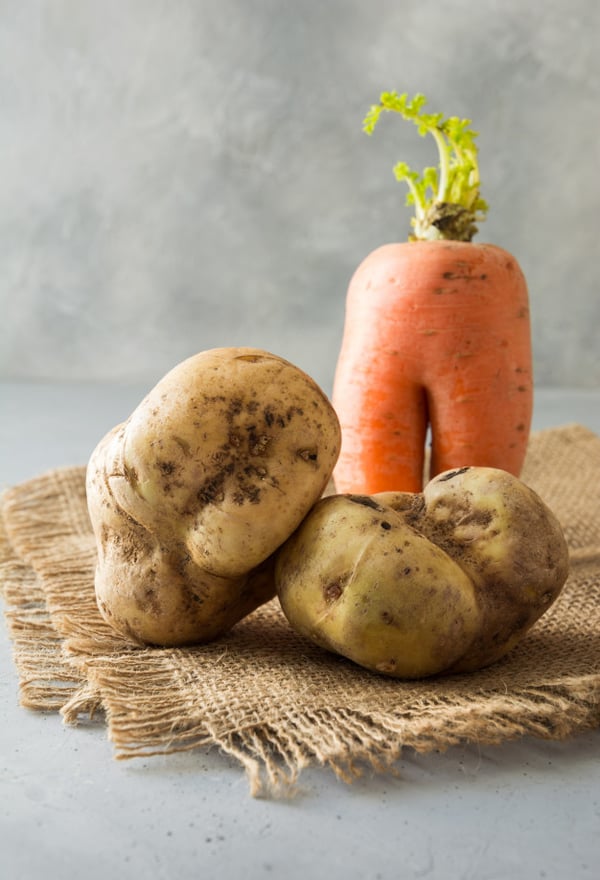

Theoretically, even if just 1/4th of the food wasted globally could be saved, it would be enough to feed 870 million hungry people in the world. We have purchasing power and can make a positive change by consuming more mindfully. We can choose local and seasonal produce, and gain a deeper connection to people and place by shopping at farmers’ markets. We can ask our retailers, big and small to stock imperfect fruit and vegetables. Tackling a global environmental issue begins with one conscious individual bringing about small change. We connect with ourselves through nature. In choosing ugly fruit, we honor nature and become the holistic wellness warriors we strive to be.
Making a positive environmental impact is just one of the reasons why I work daily with this fresh & delicious produce whose only crime is being a little off-size, off-color, a little ugly, or a little overproduced.
-------------------------------------------------------------------------------------------------------------------------------------------------------------------------------------------------------
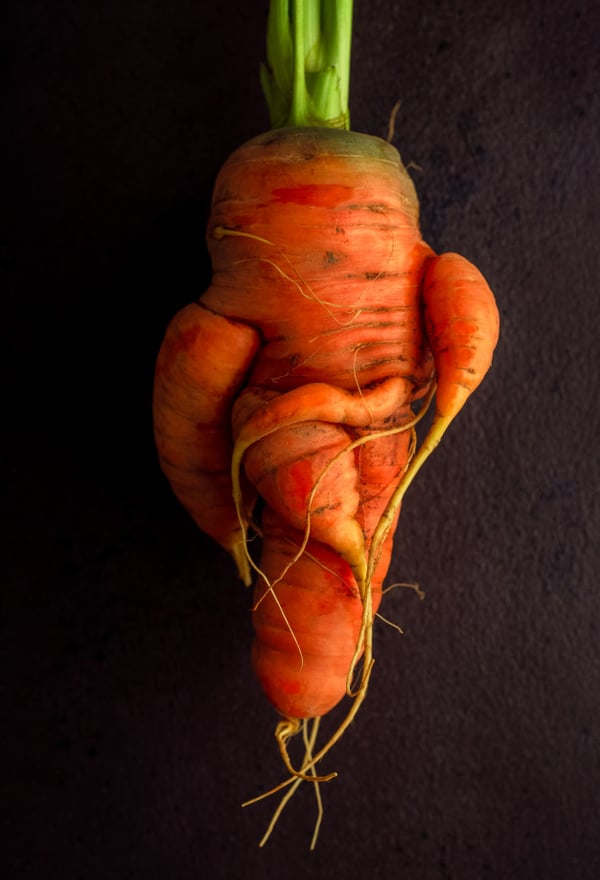

~Food losses and waste amounts to roughly US$ 680 billion in industrialized countries and US$ 310 billion in developing countries.
~Industrialized and developing countries dissipate roughly the same quantities of food — respectively 670 and 630 million tonnes.
~Fruits and vegetables, plus roots and tubers have the highest wastage rates of any food.
~Global quantitative food losses and waste per year are roughly 30% for cereals, 40-50% for root crops, fruits and vegetables, 20% for oil seeds, meat and dairy plus 35% for fish.
~Every year, consumers in rich countries waste almost as much food (222 million tonnes) as the entire net food production of sub-Saharan Africa (230 million tonnes).
~The amount of food lost or wasted every year is equivalent to more than half of the world's annual cereals crop (2.3 billion tonnes in 2009/2010).
~Per capita waste by consumers is between 95-115 kg a year in Europe and North America, while consumers in sub-Saharan Africa, south and south-eastern Asia, each throw away only 6-11 kg a year.
~Total per capita food production for human consumption is about 900 kg a year in rich countries, almost twice the 460 kg a year produced in the poorest regions.
~In developing countries 40% of losses occur at post-harvest and processing levels while in industrialized countries more than 40% of losses happen at retail and consumer levels.
~At retail level, large quantities of food are wasted due to quality standards that over-emphasize appearance.
~Food loss and waste also amount to a major squandering of resources, including water, land, energy, labor and capital and needlessly produce greenhouse gas emissions, contributing to global warming and climate change.
~In developing countries food waste and losses occur mainly at early stages of the food value chain and can be traced back to financial, managerial and technical constraints in harvesting techniques as well as storage and cooling facilities. Strengthening the supply chain through the direct support of farmers and investments in infrastructure, transportation, as well as in an expansion of the food and packaging industry could help to reduce the amount of food loss and waste.
~In medium- and high-income countries food is wasted and lost mainly at later stages in the supply chain. Differing from the situation in developing countries, the behavior of consumers plays a huge part in industrialized countries. The study identified a lack of coordination between actors in the supply chain as a contributing factor. Farmer-buyer agreements can be helpful to increase the level of coordination. Additionally, raising awareness among industries, retailers and consumers as well as finding beneficial use for food that is presently thrown away are useful measures to decrease the amount of losses and waste.
Thank you to Katie Hine, Eleanor Goldberg, Hungry Harvest, Misfits Market, Imperfect Product, and the UN for their research.
Home | Shop All Preserves | Blog | Giving Back | FAQ | About Us | Contact
Enjoy a flavor adventure with our small-batch, quality handmade, farm-to-table preserves created from locally sourced, fresh, seasonal, and unique organic ingredients.
Inspiring Adventure - That's My Jam!
Email: Info@jpsdelights.com | Phone: (954) 861-0714 | Fax: (954) 252-9491
Yelp | Google My Business | Facebook | Twitter | Instagram | Tumblr | Pinterest | LinkedIn | YouTube | Patreon | Nextdoor
Newsletter!
Sign up for our weekly newsletter to be the 1st to find out about our promotions and new flavors.
